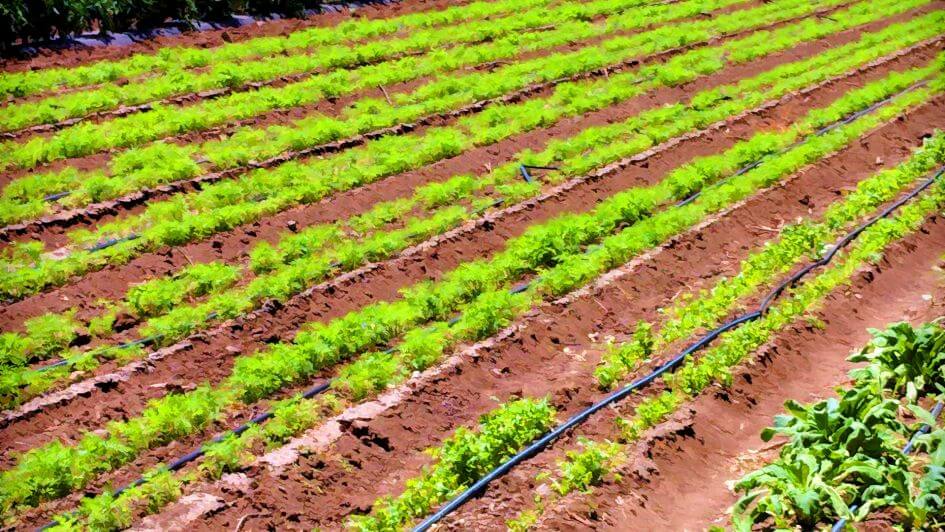After nearly three decades, a significant development at the COP28 summit in Dubai was the recognition of the agricultural sector’s crucial role in climate change. The COP28 UAE Declaration on Sustainable Agriculture, Resilient Food Systems, and Climate Action was signed by 130 nations, and the United Nations Food and Agriculture Organization rolled out a food systems roadmap to end global hunger while staying within the 1.5 degree Celsius threshold. In addition, signatories to the final declaration agreed to triple global renewable energy capacity to at least 11,000 GW by 2030. However, behind this positive policy direction, significant efforts are needed to decarbonize global food systems and assist smallholder farmers in incorporating Distributed Renewable Energy solutions (DREs) into their agricultural practices.
A recent Power for All report on Powering Agriculture With Renewable Energy: A Just Transition for Food Systems highlights the food system’s role in climate change, which is powered largely by fossil fuels and responsible for nearly 30% of all greenhouse gas emissions. According to Power for All, business-as-usual efforts to meet the 60% increase in food demand expected by 2050 through “business-as-usual” will warm the globe far past the limit of 1.5 degrees Celsius.
Countries in the Global South, despite contributing the least to the food-climate crisis, bear its harshest consequences. This imbalance threatens food systems, especially in sub-Saharan Africa, making it even harder to meet the growing population’s food needs.
The report indicates that replacing just five fossil-fuel-powered processes in African agriculture with Distributed Renewable Energy solutions (DREs) – specifically solar water pumps, solar cold storage, solar lamps, electric mills, and electric vehicles – could result in a continent-wide 10% reduction in greenhouse gas emissions, and generate economic benefits of up to $24.5 billion annually.
To accelerate this clean energy transition in the agrifood systems, powered by DREs, we hope to see progress against the following trends in 2024:
- Increased Funding and Support: Funding directed towards sustainable practices, including the use of renewable energy in agriculture, can support the development and implementation of innovative solutions.
- Solar-Powered Irrigation: Solar pumps and irrigation technologies are becoming more accessible and cost-effective, providing farmers with a reliable and sustainable source of energy for irrigation. This is particularly important in regions such as sub-Saharan Africa where access to electricity is limited. Research suggests that solar irrigation could result in a 42% income increase, less groundwater use, and higher productivity.
- Wind and Biomass Energy: While solar energy is widely adopted, there is increasing interest in other forms of renewable energy, such as wind and biomass, for agricultural applications. Wind energy can be harnessed to generate power for various on-farm activities, and biomass energy can be derived from agricultural residues, offering a sustainable source of power.
- Energy-Efficient Technologies: Advances in energy-efficient technologies contribute to the optimization of energy use. Precision agriculture, smart irrigation systems, and the use of energy-efficient equipment help maximize the productivity of renewable energy sources.
- Minigrids for Rural Communities: Minigrid solutions, powered by renewable sources, are gaining traction in rural areas. These mini-grids not only provide energy for agricultural activities but also support rural electrification, contributing to the overall development of rural communities. In Africa Millions stand to gain energy access from DRE, improving quality of life, health, education, income opportunities, and reducing energy poverty.
- Policy Reform and Incentives: Power for All’s recent study found that only 6 out of 48 African countries had clear targets for the use of DREs in their Agricultural Transformation Plans. We hope to see more African nations reforming their agricultural policies to prioritize the integration of DRE. Governments must introduce subsidies, tax incentives, or favorable regulations to encourage farmers to adopt sustainable and renewable practices.
- Technological Integration: The integration of renewable energy with advanced technologies, such as digital devices and data analytics, is enhancing precision farming. This integration can optimize resource use, improve crop yields, and reduce environmental impact.
- Community-Based Renewable Projects: Community-driven renewable energy projects are emerging, allowing farmers to collectively invest in and benefit from renewable energy solutions. This cooperative approach can enhance energy access and affordability for agricultural communities.
Overall, the discussions and commitments at COP28 regarding sustainable agriculture and food systems are likely to catalyze long-overdue advancements in the clean energy transition within the agriculture sector in 2024 and beyond.


